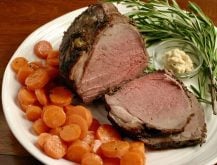GRETNA, Man. – All four of the Wiebe family adults admit they are always running to keep up with the work a family farm requires.
“It’s very busy,” said Gerald, who oversees the two-site operation, which includes two hog feeder barns and 2,800 acres of cropland, as well as a semi-trailer they use to haul their hogs to South Dakota.
“We maybe do too much ourselves, but it works.”
Patty, Gerald’s wife, would like to be less busy, but wouldn’t make the sacrifices needed to slow down.
Read Also

Rural Manitoba resources slim on natural disaster planning
A study from Brandon University’s Rural Development Institute has found that many rural and small municipalities don’t have the staff or resources to make formal climate plans against natural disaster.
“We are independent, 100 percent, right through,” said Patty proudly.
“We’re one of those long-lost
independent producers that you don’t hear about any more. We do everything here. Totally.”
The southern Manitoba hog industry has experienced a rush of transformation since the beginning of the 1990s, with traditional farms where the family does it all evaporating as most operations become dedicated to only one or two parts of the food supply chain.
But the Wiebes like to control everything themselves. They grow the grain they feed the pigs, make the feed and supply the hog barn labour.
Right now Gerald, Patty and Grade 12 son Scott do all the work in the barns, while Grade 7 son Mark looks after the small herd of Pinzgauer cows.
Daughters Marika, in Grade 11, and Jessica, in Grade 9, aren’t as interested in farming right now. But then, neither was their mother.
Patty grew up in the town of Altona, where her family moved when she was in Grade 1 after her father lost a leg in a sugar beet harvester accident. She has few memories of the family farm and never intended either farming or marrying a farmer.
“I would never have set that as a goal,” she said with a laugh.
But through her friendship with a sister of Gerald’s, love bloomed and the couple married in 1984.
The couple recently sold their original home after they bought Gerald’s parents’ farm in 2001. The hog feeder barn was originally a chicken barn that they converted.
Gerald has always loved working with pigs, but at first Patty was scared of the snorting pink creatures. What she wasn’t scared of, she said, was the famous odour of hog manure.
“I’ve never been squeamish,” she said.
But even in hog-heavy Mennonite southern Manitoba, some people aren’t keen on the smell. That’s something the Wiebes have had to deal with often, because this barn sits at a busy junction of a highway leading into Altona and a major farm service provincial road.
“We have received an awful lot of criticism, because everyone going to town drives right by here and if the wind’s right, the smell travels across the road,” said Patty.
“We follow every regulation and do everything we can, but there’s only so much you can do.”
But they’re always trying something new. On this day the Wiebe farm is buzzing with the sounds of a class of local Grade 6 children who are planting trees for a new shelterbelt between the barn and the highway. The hog manure smell issue frustrates many producers, but the Wiebes have decided to deal openly with it.
The shelterbelt being planted is part of a project including the Prairie Farm Rehabilitation Administration, Manitoba Agriculture, local municipalities and the Manitoba Pork Council.
Gerald admitted he wouldn’t automatically invite a gaggle of government and the public to run around on his farm on a busy day, but the pork council convinced him to allow his high-visibility farm to be used for a shelterbelt demonstration.
There are also spectators on the farm on this day. But that’s not new: Herman and Mary, sitting in their van watching, are often out at the farm, taking in the farming life they left
behind.
They are Patty’s parents, and even though they moved off their own farm decades ago after Herman’s accident, they can’t let go of their interest in farming.
“We spend hours and hours out here, seeing what they’re doing,” said Mary, who is 81years old.
They had eight children, but only one now lives on a farm. Are they happy Patty married a farmer?
“Oh you bet,” said Mary.
“He is, especially,” she said of Herman.















